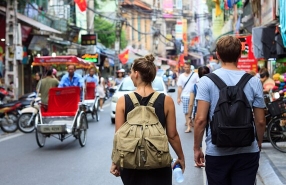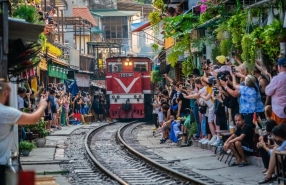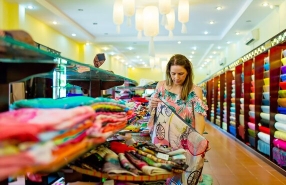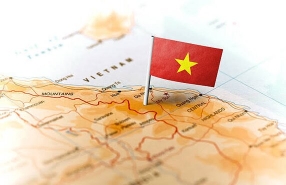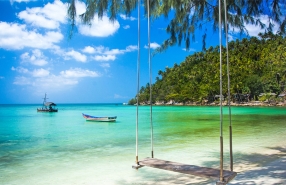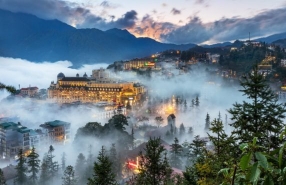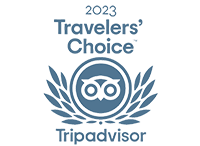Traditional And Cultural Festivals In Ba Be Worth Discovering

Table of Contents
I. Long Tong Festival - Going to the field Festival
- Vietnamese name: Lễ hội Lồng tồng Ba Bể
- Time: the 10th of the first lunar month (often in February or March)
- Place: Bo Lu Village, Nam Mau Commune, Ba Be District, Vietnam
The Long Tong Festival, also called the "Going to the field Festival", is undoubtedly the best-known of Ba Be traditional festivals. It generally takes place in early spring (between the 9th and 11th day of the first lunar month) in Tay villages, particularly around Ba Be Lake.
This festival marks the beginning of the new agricultural season. Locals pray for good harvests, beneficial rain, and prosperity. The main ritual is led by shamans dressed in traditional costumes. Offerings such as colored sticky rice, chickens, and corn alcohol are presented.
After the rites, festivities occur: Tay "luon" songs, weaving and cooking competitions, and, above all, folk games such as tug-of-war, ball throwing, and boat races on the lake. The atmosphere is joyful, uniting all generations living here.
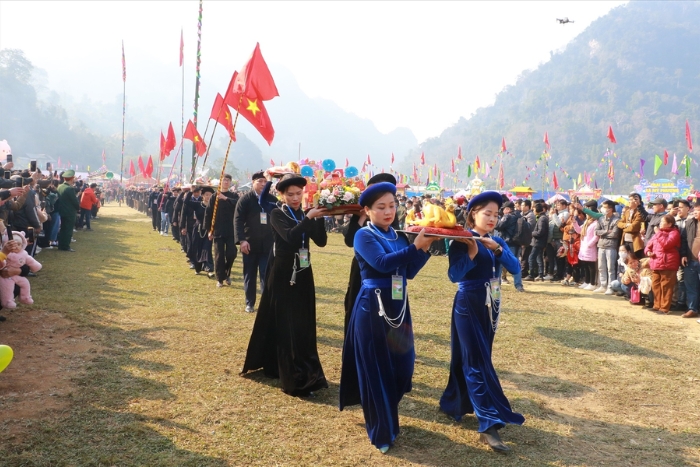
II. Nang Hai Festival - Honoring Mother Moon
- Vietnamese name: Lễ hội Nàng Hai / Lễ mời Trăng
- Time: From the 30th of the first month to the 22nd of the third month of the lunar calendar in even years (usually February and March)
- Place: organized by the villages in Ba Be, such as Bo Lu village
The Nang Hai Festival is another gem of the Ba Be traditional festivals, specific to the Tay ethnic group. It takes place every two years (even years) in the communes of Nam Mau.
According to the folk beliefs of the Tay people, on the moon are Nang Hai, also known as Mother Moon, and fairies. Mother Moon and the fairies take care of the people's crops each year. The symbolic significance of the Nang Hai Festival is the journey to heaven to welcome Mother Moon and the fairies to earth to enjoy the festival, visit fields, homes, and daily life, and assist the earth in its work and life, blessing it with favorable weather, good harvests, and growth.
The centerpiece of this festival is a ritual theatrical performance that lasts all night, combining dance, music, and poetry recitation. Nearly 40 to 60 people (often amateur artists from the village) participate. This play tells the story of Nang Hai's arrival on Earth, his blessings, and his divine ascension. Each scene is richly costumed, and the songs are sung in the Tay language.
The Nang Hai Festival is unique: it combines sacred theater, spirituality, and the transmission of traditional values to younger generations.
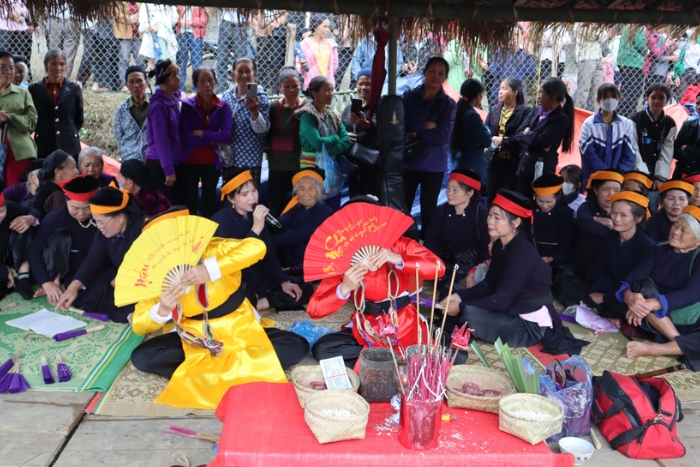
III. Land and Water Festival in Ba Be
- - Vietnamese name: Lễ hội rước Đất, rước Nước
- - Time: 15th of the first lunar month (usually February or March)
- - Place: the vast field of Bo Lu village in Ba Be.
The Ba Be Land and Water Festival is less well-known but equally important among the Ba Be traditional festivals. It is generally held in the lunar month of February and involves the villages located on the lakeshore.
This festival aims to pay homage to the vital elements of the earth (for crops) and water (the source of life and sustenance). It begins with a colorful procession from the village's main temple to the lakeshore. Offerings are thrown into the water to thank the protective spirits.
Beyond its religious dimension, this festival conveys an ecological message: the protection of natural resources. Speeches are given on the importance of preserving Ba Be Lake, the forest, and the rice fields. Traditional songs and prayers in the local language punctuate this fervent day. Water puppet shows, a typical Vietnamese art form, are also featured.
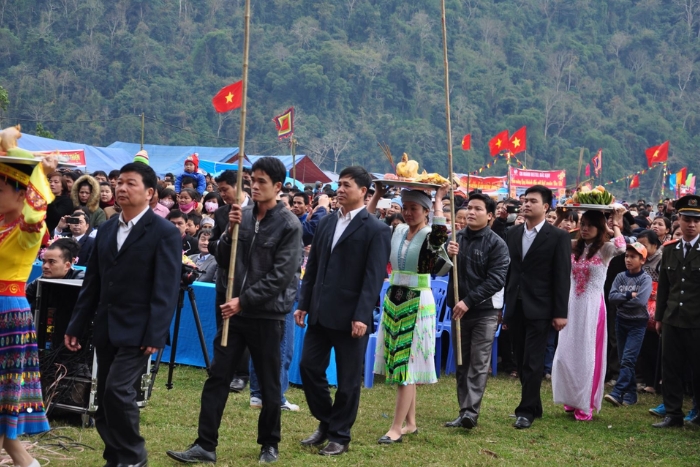
IV. Xuan Duong Love Market
- Vietnamese name: Chợ tình Xuân Dương
- Temps : le 25 du troisième mois lunaire (généralement avril ou mai)
- Place: Bac Sen village, Xuan Duong commune.
The Xuan Duong Love Market is a traditional event of romance and ethnic culture. Held once a year, this market is not just a place for commercial exchange, but a space where young people, mainly from the Nung, Tay, and Dao ethnic groups, gather to sing, court, and sometimes rekindle old romances. In a festive atmosphere, participants dressed in their finest traditional costumes exchange alternating songs, symbolic gifts, and knowing smiles. It's a wonderful opportunity to perpetuate the romantic customs of yesteryear while respecting local traditions.
Nowadays, this Ba Be cultural event offers numerous cultural and artistic activities that attract large crowds. Festival visitors can enjoy the sweet melodies of the Then, Sli, Luon, and Tinh lutes and folk games such as grass laying, duck-neck ring tossing, stilt walking, and more, as well as sample local cuisine.
V. ATK Cho Don Spring Festival
- Vietnamese name: Hội xuân ATK Chợ Đồn
- Time: from the 14th to the 15th of the first lunar month (usually February or March)
- Place: Cho Don District Cultural, Sports and Communication Center, Group 3, Bang Lung Town, Bac Kan.
The Cho Don Spring Festival is one of Ba Be traditional festivals not to be missed during the Lunar New Year. Held annually at the beginning of the lunar spring, this festival brings together local ethnic communities, including the Tay, Dao, and Nung peoples, in a friendly and joyful atmosphere. Participants can observe traditional prayer rituals for a prosperous year alongside exciting activities such as folk games, co-singing, dancing, and cooking competitions. It is an opportunity for all members of the community to meet, connect, and exchange cultures, and to promote them widely to tourists.

Ba Be traditional festivals are treasures of the intangible heritage of local ethnic groups. Through sacred rituals, ethnic songs, dances, and folk legends, these festivals reflect the culture and lifestyle of people deeply attached to nature, ancestors, and community. If you'd like to explore this rich cultural space, contact the Vietnam travel agency to help you plan your itinerary and create the best memories of Ba Be.
You can refer to the blog "Best restaurants in Ba Be" for famous Ba Be restaurants. Ba Be's culinary specialties reflect the richness of local ethnic traditions. Typical dishes include grilled lake fish, smoked mountain pork, multicolored sticky rice, and Tay "bánh chưng".
Don't miss the fermented corn liquor served in bamboo jars during Ba Be traditional festivals. These dishes are often shared during festivals, offering an authentic and convivial dining experience.
The best time to visit Ba Be Lake and experience its traditional festivals is between January and March. This is when Ba Be traditional festivals, such as the Long Tong Festival, the Nang Hai Festival, and the Land and Water Festival, take place.
The climate is mild, the rice fields are beginning to turn green, and the festive atmosphere of the villages offers a unique cultural immersion into the traditions of local ethnic groups.
Related travel guide
Other similar articles
CUSTOMIZABLE BY LOCAL EXPERTS
Personalized trip at the original price!
REFUND GUARANTEE
We believe in our work and promise to give you money back.
GOOD PRICE / QUALITY
95% satisfied more than expected!
24/7 LOCAL SUPPORT
We are always available online to provide assistance at any time.
Most read articles
Autour Asia is highly recommended on
Embracing the mission of "Satisfied more than expected" and providing authentic experiences, we have received numerous recommendations on reputable travel forums:













